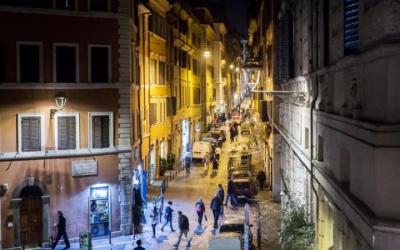Abrasive LED lights rob Rome of charm

ROME—The city council has started the process of replacing Eternal City’s traditional lanterns with LED lights, much to the annoyance of local residents.
An evening in Rome is characterised by the dim, romantic lighting of the winding cobbled streets, but this is all going to change with the council’s drastic plans to install LED lights in place of the traditional yellow sodium lamps.
Supposedly, the new lights will save thousands every year in energy bills, but this saving comes at a cost, with the new lights giving off a harsh white glare. Further, the initial outlay of the project will set the city back €48 million.
“Wasted money used to spoil the city” said Nathalie Naim, the radical Municipio I counsellor, unimpressed by the city council’s plans. “The alleyways in the most beautiful neighbourhoods in Rome, from Monti to Borgo Pio, now look like a morgue at night-time,” she added.
Naim is not alone in her aversion to the city’s remodelling- across the historical centre, various residents and workers are up in arms, worried about the impact of the charmless new lights.
“The new lights are monstrous” said the director of Hotel Locarno in Via della Penna.
“If you are having trouble understanding the difference that has resulted, I can only compare it to a candle-lit dinner versus the frozen food aisle of your local grocery store,” commented Elizabeth Minchilli, a well-known tour guide and food writer.
Residents protested on the Capitoline Hill, with one Borgo local, Linda Cipollone, writing that, “the substitution of the lights is radically altering the urban décor.”
“Vivere Trastevere”, a local residents group, is urging fellow trasteverians to put a candle in their window, as a sign of protest against the council’s measures.
Heritage groups have appealed to Virginia Raggi, the Mayor of Rome, and Dario Franceschini, Italy’s culture minister, to stop the installation of the new lights.
It seems unlikely that anything will change in the near future, however, as the council predicts savings of €23 million a year, and 55 percent reduction in energy consumption.


